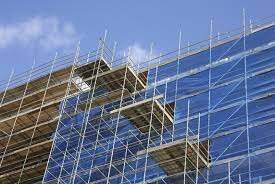When embarking on a construction or renovation project, scaffolding is a crucial component that ensures both safety and efficiency. In Auckland, hiring scaffolding can be an excellent choice for managing your project needs. This guide will walk you through everything you need to know about scaffolding hire in Auckland, from types and benefits to choosing the right provider.
Why Scaffolding is Important for Your Project
Scaffolding provides a temporary structure that supports workers and materials during tasks that require working at height. It plays a vital role in ensuring safety, accessibility, and efficiency. Here’s why scaffolding is essential:
- Enhanced Safety: Scaffolding offers a stable platform to prevent falls and accidents, making it safer for workers to perform tasks at elevated heights.
- Improved Accessibility: It allows workers to reach difficult areas of a building, such as high walls and roofs, with ease.
- Increased Efficiency: With scaffolding in place, workers can complete their tasks more quickly and effectively, improving overall productivity.
Types of Scaffolding Available for Hire
In Auckland, there are several types of scaffolding available, each suited to different project requirements. Here are the most common types:
1. Supported Scaffolding
Supported scaffolding is the most widely used type. It consists of platforms supported by vertical poles or frames. This type is suitable for general construction and maintenance work, providing a stable base for various tasks.
2. Suspended Scaffolding
Suspended scaffolding is suspended from a structure above, typically using ropes or cables. It is ideal for high-rise buildings or tasks that require frequent height adjustments, such as window washing or facade repairs.
3. Rolling Scaffolding
Rolling scaffolding is mounted on wheels, making it easy to move around the work site. This type is often used for indoor projects or areas with limited space, allowing for flexible and efficient movement.
4. Cantilever Scaffolding
Cantilever scaffolding extends outward from a structure and is supported at one end. This type is useful when scaffolding needs to be set up over sidewalks or streets where ground support is not feasible.
Benefits of Hiring Scaffolding in Auckland
1. Cost-Effectiveness
Renting scaffolding is often more cost-effective than purchasing it, especially for short-term projects. Auckland rental companies offer flexible hire periods, so you only pay for the time you need.
2. Access to Expertise
When you hire scaffolding, you benefit from the expertise of rental companies. They can help you choose the right type of scaffolding and ensure it meets safety standards.
3. Maintenance and Safety Compliance
Reputable scaffolding hire companies regularly maintain their equipment to ensure it’s in good condition. This helps reduce the risk of accidents and ensures compliance with local safety regulations.
How to Choose the Right Scaffolding Hire Company
1. Reputation and Experience
Look for a company with a strong reputation and extensive experience in the industry. Customer reviews and testimonials can provide valuable insights into their reliability and service quality.
2. Variety of Scaffolding Options
Ensure the company offers a range of scaffolding options to suit your specific needs. They should provide various types and sizes of scaffolding based on the nature of your project.
3. Safety Standards Compliance
Verify that the company’s scaffolding adheres to New Zealand’s safety standards. This includes regular inspections and maintenance to ensure safety and stability.
4. Flexible Hire Terms
Opt for a company that offers flexible hire terms. This allows you to adjust the rental period according to your project’s progress, helping you avoid unnecessary costs.
Planning for Scaffolding Hire
1. Assess Your Project Requirements
Evaluate the specific needs of your project before hiring scaffolding. Consider factors such as the height of the work area, the scope of the project, and any site-specific challenges.
2. Take Accurate Measurements
Measure the area where the scaffolding will be set up to ensure it fits properly. Accurate measurements help in selecting the right size and type of scaffolding.
3. Consult with Professionals
Discuss your project with the scaffolding hire company. They can provide expert advice on the best type of scaffolding and any additional equipment you may need.
4. Consider Additional Services
Some scaffolding hire companies offer additional services, such as delivery, assembly, and dismantling. These services can save you time and ensure the scaffolding is set up correctly and safely.
Safety Tips for Using Scaffolding
1. Inspect the Scaffolding
Before use, inspect the scaffolding for any signs of damage or instability. Report any issues to the rental company immediately.
2. Follow Safety Guidelines
Adhere to all safety guidelines and regulations when using scaffolding. This includes wearing appropriate personal protective equipment (PPE) and ensuring all workers are trained in proper scaffolding use.
3. Keep the Work Area Clear
Maintain a clear work area around the scaffolding to minimize tripping hazards and ensure a safer working environment.
4. Check Stability Regularly
Periodically check the stability of the scaffolding throughout the project. Make any necessary adjustments to maintain its level and secure position.
Conclusion
Hiring scaffolding in Auckland is a practical solution for managing construction and renovation projects safely and efficiently. By understanding the types of scaffolding available, choosing a reputable hire company, and following safety guidelines, you can ensure the success of your project. Remember, proper scaffolding not only enhances safety but also improves productivity and project outcomes.



